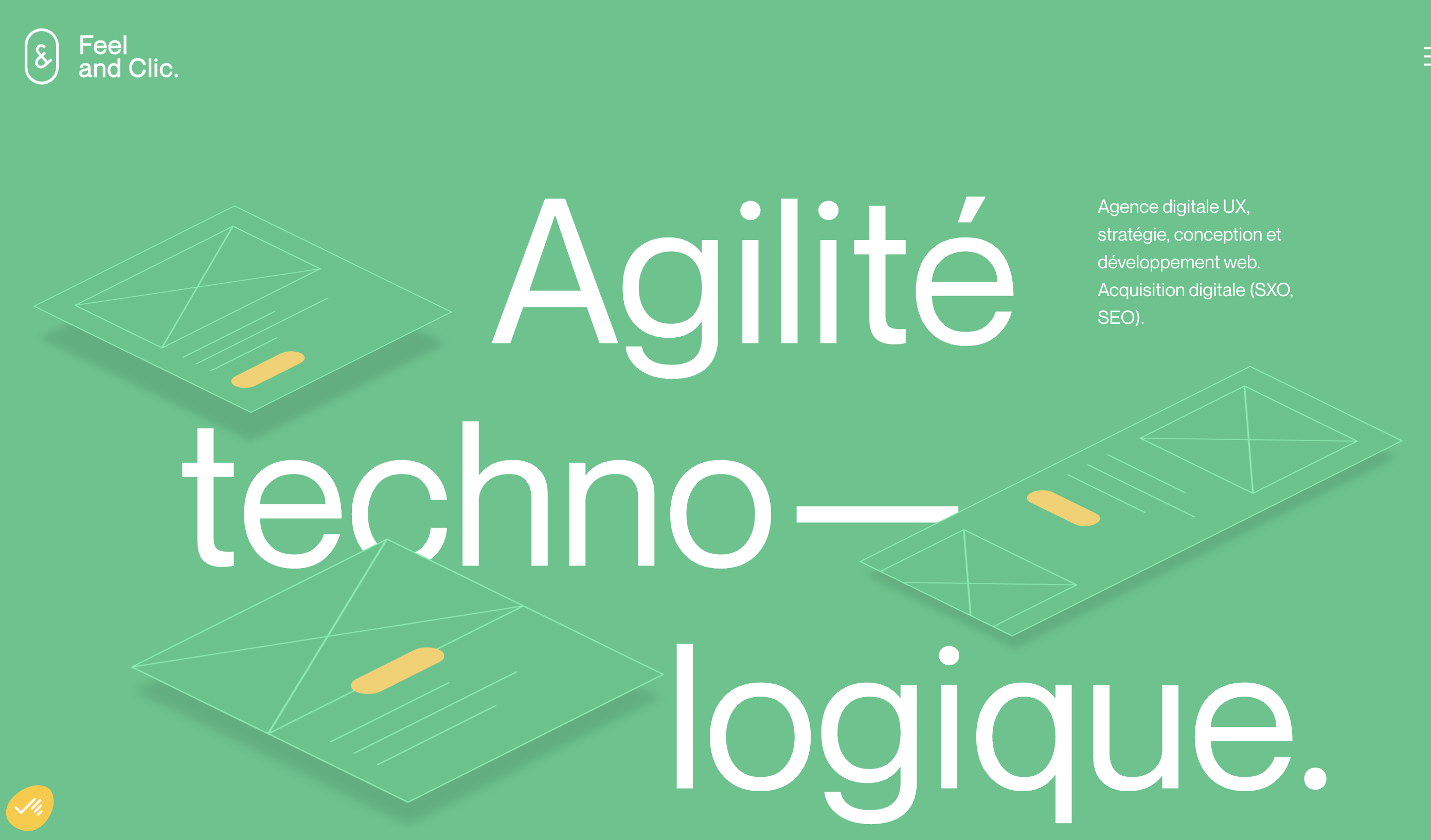
Understanding User Experience in Ecommerce
Optimizing User Experience for Your Ecommerce Site
Understanding user experience (UX) in ecommerce website design is crucial for any online store aiming to boost sales and enhance customer engagement. In essence, a well-designed commerce website should ensure that your customers have a seamless shopping experience from the moment they land on your site until they complete a purchase. A key factor in crafting an intuitive ecommerce platform is ensuring that users easily navigate through your site. This involves designing a clean, user-friendly interface that allows for straightforward browsing and efficient interaction with products.- Intuitive Navigation: Effective navigation is paramount to your ecommerce business. It should help users explore categories, locate products quickly, and move smoothly through the shopping cart steps.
- Load Speed: A high-quality ecommerce design should focus on optimizing load speed, especially as slow websites can deter customers. Ensuring pages load promptly will keep users engaged and reduce bounce rates.
- Responsive Design: As mobile shopping becomes increasingly prevalent, it's vital that your commerce website adapts seamlessly to various devices. A responsive design enhances the shopping experience, catering to different screen sizes and improving accessibility.
Visual Appeal and Branding
Enhancing Visual Persuasion: Building Memorable Brand Impressions
To create an impactful ecommerce website, focusing on visual appeal and branding is crucial. A distinctive brand image not only sets your business apart from competitors but also fosters a lasting connection with your customers. Here are some strategies:- Consistent Branding Elements: Utilize your brand’s logo, color scheme, and typography across your online store. Consistency in *design* builds familiarity and trust with visitors to your ecommerce site.
- High-Quality Imagery: Invest in high-quality images that portray your products accurately. Clear, professional images enhance the shopping experience by allowing users to see details and features, encouraging them to take action on their purchases.
- Unique Design Elements: Create a website with a unique visual identity that resonates with your target audience. Tailor your ecommerce design to align visually with your brand’s values and personality.
- Captivating Videos: Incorporate dynamic content such as product demonstration videos. This content can provide an engaging way to explain product features, and boost website engagement and ultimately sales.
- Effective Use of White Space: White space, or negative space, enhances readability and draws attention to your key messages. A simple, clean layout helps guide customers effortlessly through your ecommerce website.
Mobile Optimization Strategies
Creating a Seamless Experience Across Devices
In the rapidly evolving world of ecommerce, ensuring your website caters effectively across all devices has become indispensable. A seamless experience regardless of where the users access your site not only enhances the shopping experience but also encourages customers to engage more frequently and potentially increase sales. The rise of smartphones and tablets has pushed businesses to adopt mobile-first strategies, yet balancing design for mobile and desktop still challenges many. To achieve this, considering responsive design is key where the layout adapts automatically to different screen sizes, maintaining the site's usability and aesthetics. Ensuring elements like buttons and forms remain easily clickable or tappable, irrespective of the device, greatly affects the user journey. Employing a reliable website builder that supports mobile optimization can streamline this process. Many website builders today offer drag-and-drop features easing the customization of your ecommerce design while optimizing the mobile experience.Strategies for Engaging User Interaction
To maximize user engagement, integrating interactive elements can significantly boost the appeal of your ecommerce store. Among these are dynamic content features like carousels showcasing best-selling products or flash sales, encouraging users to explore more of what your business offers. However, while adding these appealing features, it's crucial to ensure they do not hinder the performance speed of your website, as slow loading times can lead to higher bounce rates. Including imagery and multimedia that load swiftly and look consistent on various devices is essential for high quality and unique ecommerce websites. Moreover, leveraging customer retention software can provide insights on how visitors interact with your site, helping fine-tune the shopping journey for improved satisfaction. By adopting a tailored approach towards user interaction across all platforms, businesses can witness tangible impacts on their ecommerce success, boosting both user engagement and conversion rates.Effective Product Presentation
Showcasing Products with Precision
In the realm of ecommerce, the way products are presented can significantly impact a customer's decision to purchase. A well-designed ecommerce website should prioritize high-quality images and detailed descriptions to give users a clear understanding of what they're buying. This involves more than just uploading a few photos; it requires a strategic approach to product presentation.
First, ensure that your images are of the highest quality. Blurry or pixelated images can deter potential customers and harm your brand's credibility. Utilize multiple angles and zoom features to allow users to inspect products closely. This is particularly important for ecommerce sites where the tactile experience of shopping is absent.
Next, focus on the descriptions. They should be informative yet concise, highlighting the unique features and benefits of the product. Use bullet points for clarity and to make the information easily digestible. Remember, your goal is to fill any gaps that might exist in the user's understanding of the product.
Additionally, consider incorporating user-generated content such as reviews and ratings. This not only builds trust but also provides real-world insights into the product's performance. It's a powerful way to enhance the shopping experience and drive sales.
Finally, ensure that your product pages are optimized for search engines. This involves using relevant keywords naturally within your descriptions and metadata. A well-optimized ecommerce site can attract more organic traffic, ultimately leading to increased sales and a stronger online presence.
Streamlined Checkout Processes
Enhancing the Shopping Cart for Seamless Transactions
A well-designed shopping cart plays a pivotal role in boosting customer satisfaction and conversion rates on ecommerce websites. An essential aspect of this is creating a user-friendly platform that encourages seamless transactions for your customers. Let's look at a few key elements that can make a significant difference.
Prioritizing Simplicity and Clarity
Simplicity is not only a key principle in web design but also a crucial factor in the ecommerce checkout process. By ensuring a straightforward, intuitive interface, ecommerce businesses can significantly enhance the customer experience. Components like clearly labeled buttons, concise instructions, and visible steps can make the checkout process quicker and more efficient.
Minimizing Steps Required for Checkout
Reducing the number of steps between product selection and payment can prevent abandoned shopping carts. Consider integrating a single-page checkout option or reducing the amount of information required to complete a transaction. An effective approach can be allowing users to save their details for future purchases, streamlining the future shopping experience.
Offering Diverse Payment Options
Incorporating a variety of payment methods can also match diverse user preferences, enabling more successful checkouts. An ecommerce site that integrates popular digital wallets, credit cards, and even installment payment options will likely see an increase in conversion rates.
Providing Clear Progress Indicators
Progress indicators can guide customers through the checkout journey and ensure they know exactly where they are in the process. It also lowers the likelihood of frustration, thereby reducing the potential of customers abandoning their cart.
Ensuring Security and Trustworthiness
Finally, security is a priority. By prominently displaying trust badges and ensuring a secure, encrypted URL during the checkout process, an ecommerce business can assure customers that their sensitive information is protected. This builds trust and confidence in the online store, ultimately supporting greater sales.
As every aspect of ecommerce design works together to enhance the overall shopping experience, it's crucial to continuously refine these elements to align with evolving user expectations and technological advancements.
Incorporating SEO for Ecommerce Success
Optimizing Your Ecommerce Site for Search Engines
In the competitive world of ecommerce, having a visually appealing and user-friendly site is just the beginning. To truly stand out and drive sales, it's essential to incorporate effective SEO strategies into your ecommerce website design. This ensures that your online store is easily discoverable by potential customers searching for products like yours.
Here are some key SEO practices to consider:
- Keyword Research: Identify the best keywords that your target audience is using to find products similar to yours. Incorporate these keywords naturally into your product descriptions, category pages, and blog content.
- Unique Product Descriptions: Avoid using manufacturer descriptions. Instead, craft unique, high-quality descriptions that highlight the benefits and features of your products. This not only helps with SEO but also enhances the shopping experience by providing valuable information to your customers.
- Optimized URLs: Ensure that your URLs are clean and descriptive. A well-structured URL helps search engines understand the content of your page and improves user experience.
- Mobile Optimization: As discussed earlier, mobile optimization is crucial. A responsive design not only improves user experience but also boosts your site's SEO, as search engines prioritize mobile-friendly sites.
- Fast Loading Speeds: A slow-loading site can deter customers and negatively impact your SEO. Optimize images, leverage browser caching, and minimize code to ensure your site loads quickly.
- Social Media Integration: Encourage social sharing of your products and content. This can drive traffic to your site and improve your search engine rankings.
By integrating these SEO strategies into your ecommerce design, you can enhance your site's visibility, attract more customers, and ultimately increase sales. Remember, a well-optimized ecommerce site is a powerful tool in building a successful online business.













